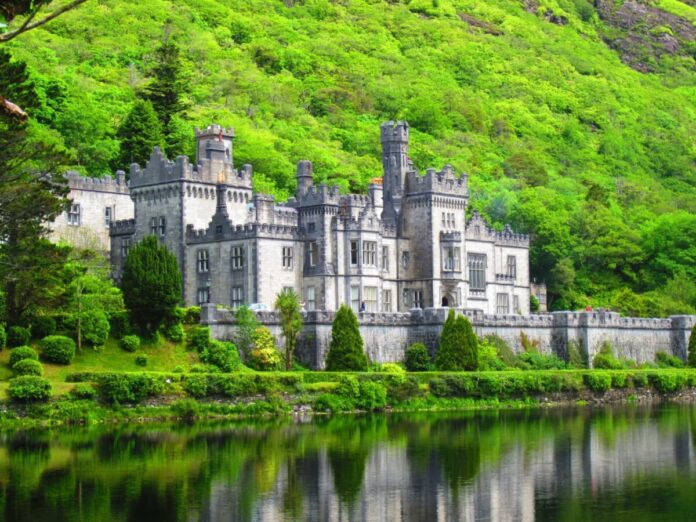
Welcome to the enchanting realm of Ireland, a land steeped in mystique and known as the Emerald Isle for its lush and verdant beauty. From timeless legends of fairies and folklore to the breathtaking expanse of its landscapes, Ireland offers a journey that is both captivating and otherworldly. As you prepare to embark on an adventure to this captivating destination, allow us to unveil a carefully curated selection of the most cherished activities and attractions. Let the exploration of this captivating land unfold!
Ireland, often referred to as the Emerald Isle, is a captivating and magical blend of ancient myths, fairies, dramatic landscapes, and vibrant culture. If you’re planning a trip to this enchanting country, here’s a curated list of the favourite activities and attractions from travel blog connollycove.com :
In Dublin City:
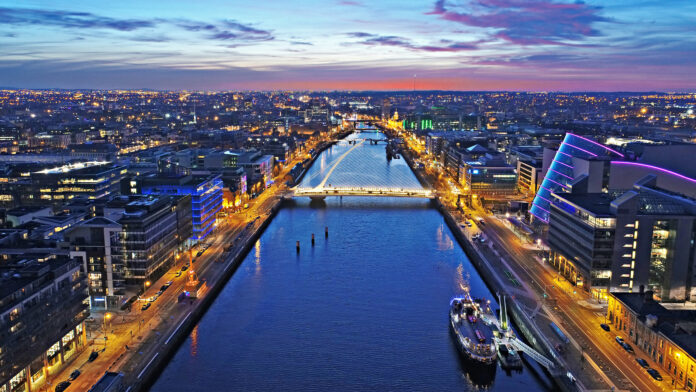
Guinness Storehouse: Dublin’s top visitor attraction, the enormous Guinness Storehouse unfolds the tale of Ireland’s iconic black stout across seven floors. The Gravity Bar at the very top offers a complimentary pint of perfectly poured Guinness and 360-degree panoramic views across the city.
Trinity College and the Book of Kells: Founded in 1592, Trinity College is Ireland’s oldest university. Its magnificent Old Library houses the Book of Kells, a stunningly illustrated 9th-century manuscript of the four gospels. The Long Room, with its awe-inspiring barrel-vaulted ceiling and walls lined with 200,000 rare and ancient books, is a must see.
Dublin’s Temple Bar: The cultural heart of Dublin, Temple Bar is renowned for its charming cobblestone streets, well-preserved historic architecture, and perpetually lively atmosphere. By day, meander through quirky boutiques, contemporary art galleries, vintage shops, and the Temple Bar Food Market. By night, join in the revelry flowing through its many traditional pubs, with live Irish music echoing joyfully through the streets. This is a very popular tourist stops – well worth walking, it is a lot cheaper to visit any of the bars just off Temple Bar.
Kilmainham Gaol: Learn about Ireland’s history of rebellion and independence at this former prison, where leaders of the rebellions of 1798, 1803, 1848, 1867 and 1916 were detained. Take a thought-provoking tour through the eerie cells and execution yard.
Dublin Castle: Occupying the site of a Viking fortress, this 13th century castle is packed with centuries of Irish history. Wander through the State Apartments and the Chester Beatty Library.
National Museum of Ireland: Ireland’s main cultural institution has fascinating archaeology, decorative arts, folklife and natural history exhibits. Don’t miss the Treasury with outstanding examples of Celtic and Medieval art, including the exquisite Ardagh Chalice and Tara Brooch.
St. Patrick’s Cathedral: Ireland’s largest church, St. Patrick’s is one of Dublin’s most iconic sights. Jonathan Swift, author of Gulliver’s Travels, was dean here in the 18th century. His grave and pulpit can be visited along with the ornate Boyle Monument.
EPIC Ireland: This immersive museum brings Irish emigration stories to life through high-tech interactive displays. Learn how Irish customs spread worldwide and track the ancestral paths of famous Irish emigrants like Henry Ford and JFK. The EPIC has been voted the best tourist attraction in Ireland!
Moving North in Ireland
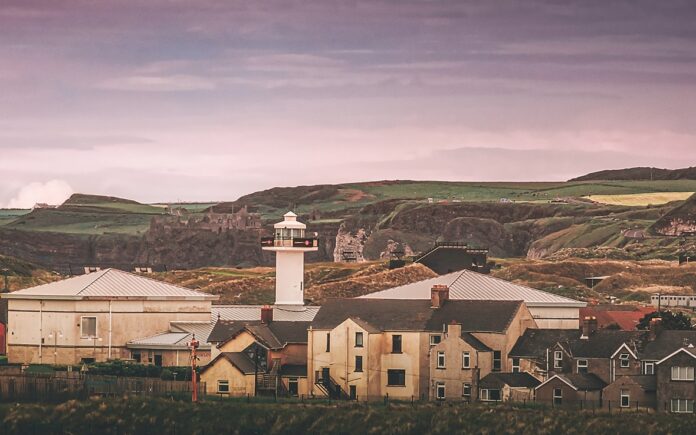
Newgrange: Over 5,000 years old, this extraordinary Neolithic passage tomb in County Meath predates the Great Pyramids of Egypt. During the winter solstice, a shaft of sunlight magically illuminates its inner chamber. Access is by guided tour only, which also covers the nearby majestic passage tombs of Knowth and Dowth.
Belfast: Northern Ireland’s buzzing capital has successfully transformed from its industrial shipbuilding past into a vibrant creative city. The Titanic Belfast museum is a marvellous tribute to the iconic ship built here. Wander through the political murals in the Falls and Shankill roads to grasp Belfast’s complex history.
Giant’s Causeway: Situated along the picturesque Antrim Coast, this unique UNESCO World Heritage site features around 40,000 interlocking hexagonal basalt columns, formed millions of years ago by ancient volcanic eruptions. Local legends evocatively claim it was built by the mighty giant Finn MacCool. The state-of-the-art visitor center brings to life both the scientific story and mythical legends of the site.
Carrick-a-Rede Rope Bridge: Suspended high above the crashing waves along the Antrim Coast, this exhilarating rope bridge links the mainland to a small island. Once used by fishermen, it now provides breath-taking coastal views … for those brave enough to cross!
Dunluce Castle: Perched precariously on a cliff edge above the Atlantic, these atmospheric medieval ruins were the seat of the earls of Antrim. Wander through its great halls, kitchens, and chambers and hear the tragic story of how part of the castle fell into the sea one stormy night in 1639.
Giant’s Causeway Coastal Route: Stretching 120 miles from Belfast to Derry, this scenic drive offers epic cliffside views.
Moving South in Ireland
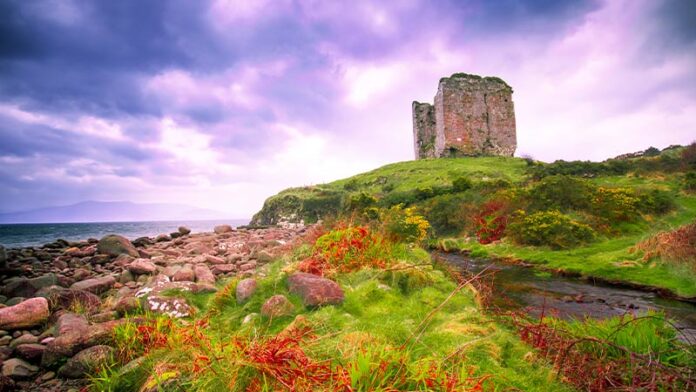
Clonmacnoise: Sitting on the banks of the River Shannon, this magnificent early medieval monastic site was founded in 544 AD. Explore the atmospheric ruins of churches, high crosses, round towers and graves, including the 9th century Great Cross of Scriptures.
Killarney National Park: Covering over 25,000 acres, this national park in County Kerry is a mosaic of glistening lakes, rugged mountains, dense woodlands, and tumbling waterfalls. Muckross House and Gardens, Ross Castle on the shores of Lough Leane, and the Gap of Dunloe are must-see attractions. Keep an eye out for native red deer!
Ring of Kerry: This popular 111-mile circular drive route takes in the varied treasures of the Iveragh Peninsula in County Kerry. Winding past pristine beaches, through picturesque towns like Killarney, Kenmare, and Waterville, The Ring of Kerry offers non-stop views of soaring mountains, ancient stone forts, and the shimmering Lakes of Killarney.
Dingle Peninsula: This ruggedly beautiful finger of land jutting into the Atlantic offers breathtaking cliffside views along the coast. Drive or hike to explore its ancient ring forts, bee-hive huts, early Christian chapels, and long sandy beaches. The charming port town of Dingle is renowned for artisanal food and rollicking traditional music sessions.
Blarney Castle: Located near Cork, this picturesque medieval stronghold is home to the legendary Blarney Stone. Climbing to the castle’s peak and kissing the stone is said to bestow the gift of eloquence. The castle’s lush, mystical gardens, with their charming waterways and fanciful rock formations, are also well worth exploring.
Cork City: Ireland’s spirited second-largest city is a hub of culture, food, and drink. The expansive English Market is foodie heaven, stacked with artisanal produce and local delicacies. Stroll along the charming River Lee, visit the imposing Cork City Gaol, and savor the city’s diverse, creative food scene.
Rock of Cashel: Dramatically crowning the landscape of County Tipperary, this sprawling medieval complex was once the seat of kings and the power centre of Munster. Explore the magnificent 12th century Cormac’s Chapel, 13th century Gothic cathedral, and the iconic round tower, one of the tallest in Ireland.
Moving West in Ireland
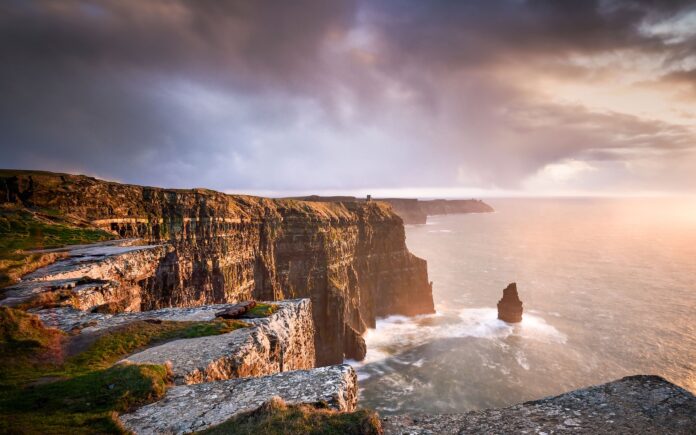
Cliffs of Moher: Stretching for 5 miles along the wild Atlantic coast, the Cliffs of Moher in County Clare are Ireland’s most iconic natural landmark. Rising up to 702 feet, these majestic sea cliffs offer truly breathtaking views of the Aran Islands, Galway Bay, and the surrounding countryside. The eco-friendly visitor centre provides interactive exhibits about the cliffs’ geology, history, and prolific birdlife.
The Burren: This starkly beautiful limestone landscape in County Clare looks almost extraterrestrial with its cracked pavements, rare alpine flowers, ancient dolmens, and mysterious underground caves. Covering over 150 square miles, the Burren National Park has marked trails guiding you through the unique geology, archaeology and botany.
Galway City: A vibrant harbour city on Ireland’s west coast, Galway is lesser known city in Europe but its celebrated for its bohemian spirit, bustling medieval streets, local seafood, and the energetic Galway International Arts Festival. The cobblestoned Latin Quarter buzzes with welcoming pubs, cafes, restaurants and traditional shops.
Aran Islands: Off the west coast lie the wild and windswept Aran Islands: Inishmore, Inishmaan, and Inisheer. Steeped in enduring Celtic traditions and myths, they boast ancient stone forts, charming thatched-roof cottages, curiosities like the Worm Hole on Inisheer, and breathtaking cliffside views.
Connemara National Park: Situated along Galway Bay, this unspoiled park encompasses mountains, expanses of bog, heaths, and the famous Twelve Bens mountain range. With its deserted valleys, empty beaches, and ruins of former tenants, it evokes a romantic wilderness. The Sky Road offers heavenly vistas of sea and mountains.
Kylemore Abbey: Nestled peacefully by a lakeside in Connemara, this 19th century Benedictine abbey and Victorian Walled Garden were built as a romantic gift. Roam through the restored Abbey, Gothic Church, and six acres of walled gardens blooming with flowers and fruit trees.
Skellig Michael: This steep, craggy island off County Kerry was home to a remote monastic community between the 6th-12th centuries. Stone steps and beehive huts cling dramatically to the sides of the rock, representing the monks’ ascetic life. Its breathtaking setting also made it the ideal filming location for Star Wars. Boat trips allow you to see it up close.
From its ancient stone circles to its cliff-fringed coasts, Ireland promises an unforgettable journey. Dive deep into its stories, landscapes, culture and traditions for a trip you’ll forever treasure. Enjoy all of its wonders!





